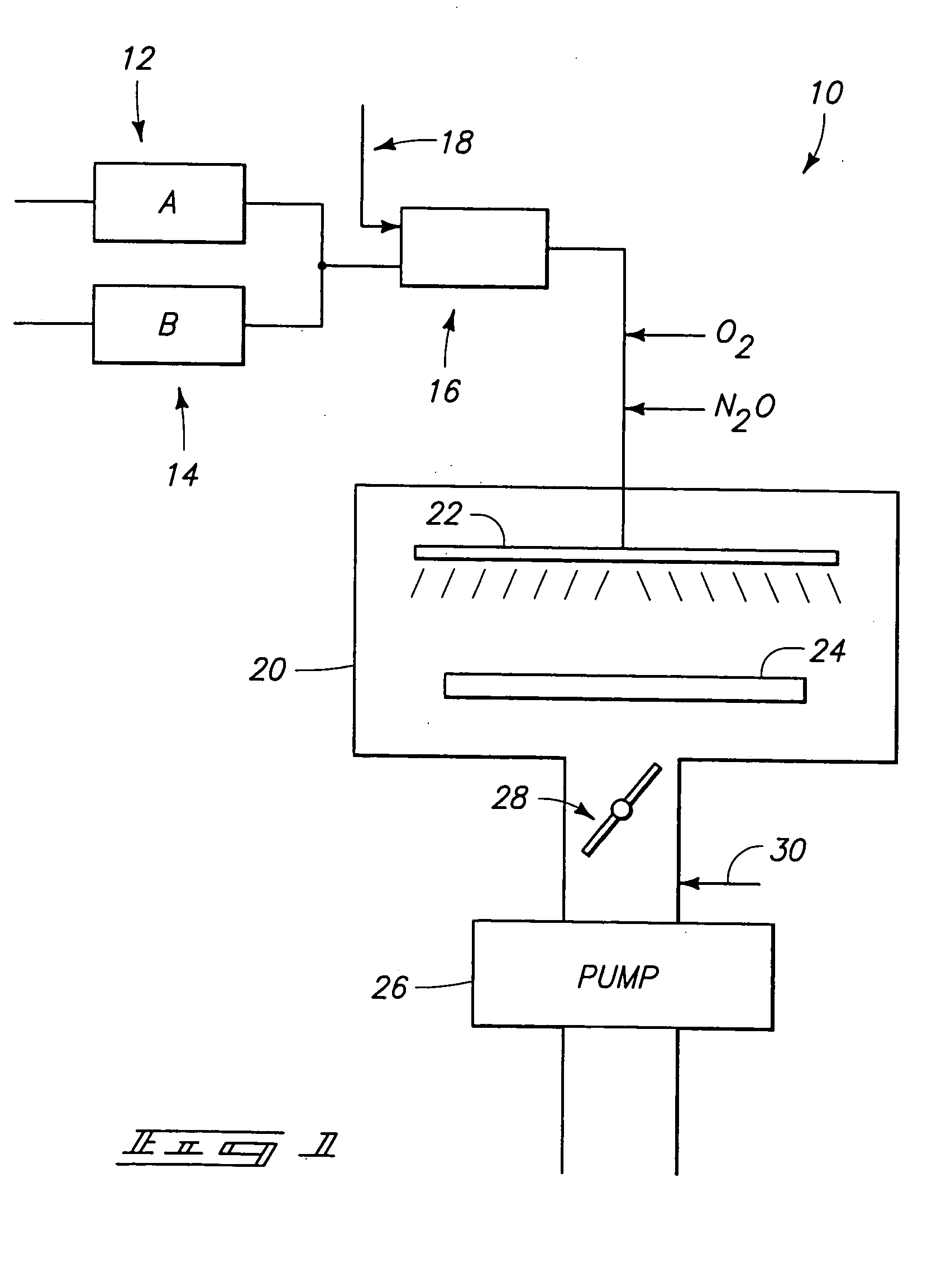Method of forming a capacitor
a capacitor and insulating layer technology, applied in the field of chemical and physical vapor deposition methods, can solve the problems of increasing current leakage, hurting leakage characteristics, and unsuitable dielectrics such as siosub>2/sub>nsub>4/sub>nsub>4/sub>
- Summary
- Abstract
- Description
- Claims
- Application Information
AI Technical Summary
Problems solved by technology
Method used
Image
Examples
Embodiment Construction
[0017] This disclosure of the invention is submitted in furtherance of the constitutional purposes of the U.S. Patent Laws “to promote the progress of science and useful arts” (Article 1, Section 8).
[0018] The prior art recognizes the desirability in certain instances of fabricating high k dielectric regions of capacitors, such as ABO3 layers as referred to above, to have variable concentration at different elevational locations in the thickness of such regions of the “A” and “B” components. For example with respect to titanates, the quantity of titanium represented by the variable “B” in ABO3 is impacting relative to leakage current characteristics and k value in the subject layer. Accordingly in some instances, it might be desirable to fabricate a capacitor dielectric region to have one elevational range of one ABO3 stoichiometry, and another elevational range of the region to have a different ABO3 stoichiometry, utilizing the same or different combinations of elements. Further, ...
PUM
| Property | Measurement | Unit |
|---|---|---|
| size | aaaaa | aaaaa |
| pressure | aaaaa | aaaaa |
| pressure | aaaaa | aaaaa |
Abstract
Description
Claims
Application Information
 Login to View More
Login to View More - R&D
- Intellectual Property
- Life Sciences
- Materials
- Tech Scout
- Unparalleled Data Quality
- Higher Quality Content
- 60% Fewer Hallucinations
Browse by: Latest US Patents, China's latest patents, Technical Efficacy Thesaurus, Application Domain, Technology Topic, Popular Technical Reports.
© 2025 PatSnap. All rights reserved.Legal|Privacy policy|Modern Slavery Act Transparency Statement|Sitemap|About US| Contact US: help@patsnap.com



